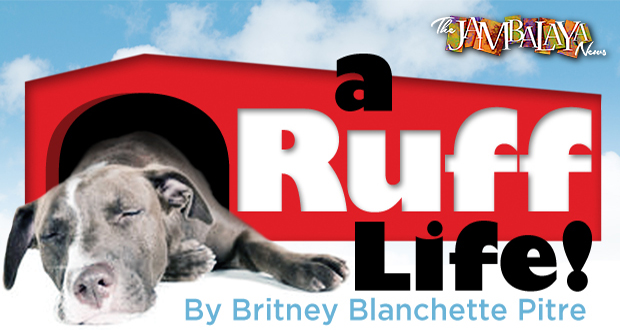Many of us have been around dogs all of our lives. So, many of us believe we know dogs pretty well. However, there are still some common mistakes that a lot of us make due to old myths that are still widely believed. The most common myth that I hear and read about most often is that dogs will attack when unprovoked, especially certain breeds of dogs that are often considered “dangerous.”
UNLESS the aggression is caused by medical (thyroid problems, tumors, etc.) or neurological issues, aggression is a learned behavior that is usually caused by one or a mixture of the following: no socialization (or late socialization), using physical force and/or punishment as discipline, being tethered for long durations of time, and/or lack of proper management. Aggression is not breed-exclusive. Any breed can become aggressive or show aggressive tendencies. So, that debunks certain breeds being “aggressive breeds.” Some dogs can do more damage than others, so this is one of the reasons why some breeds have that reputation. Obviously a Rottweiler will do more damage than a Chihuahua.
Dogs never attack unless they are provoked. We see photos on social media all the time of a dog lying down with a baby or small child crawling on top of the dog, or even attempting to ride the dog like a horse. These photos terrify me because 75 percent of the time, the dog is giving clear signals that he is stressed.
We’ve all been told that a dog wagging his tail is a happy dog, and that when a dog’s hair stands up he is scared or ready to attack. Well, that’s not always true. Dogs do wag their tails when they are happy, yet they also wag when they may be nervous, on alert, or feel threatened. Their hair may stand up when they are scared or ready to attack, but sometimes it is because they are super excited and a bit over-stimulated. This can lead to “redirected energy” or “redirected aggression,” so this is still something you need to be aware of.
Zoologist and animal behaviorist Dr. Muriel Brasseur states in an online magazine, Mirror, “The tail is an essential part of the dog’s communication system, and the height, motions, speed, and whether tense or relaxed are all important factors… For example, a low to mid-tail wagging slowly could signify a relaxed dog or a worried dog, while a tail held up higher, and wagging faster could mean a dog is happy and excited, OR on the alert.
“The direction of movement also appears to be significant. A 2007 study led by scientists at the University of Trento, in Italy, revealed that dogs wag their tails to the right when looking at something they want to approach, such as their owner. However, they wag their tails to the left when faced with something they want to back away from, such as an unfriendly or aggressive dog.”
Something as simple as a dog yawning can sometimes mean a dog is stressed out. Most people would not think twice about a dog yawning when a baby is climbing on him…until…SNAP! Then, the dog is blamed, rather than the guardians for not listening to what the dog was trying to say and/or managing the situation properly.
The most common stress signals are: yawning, nose licking, shaking the head or body, side glances, stiff body, grooming, wide eyes and scratching. However, you cannot just look at one part of the body to determine what your dog is trying to tell you. You must look at the body as a whole, as previously quoted by Dr. Brasseur. I always encourage my clients to search the Internet for documentation and videos of dog body language and stress signals so that they can have a better understanding of communicating properly with their dogs. I encourage you to do the same. It is so important to have clear and effective communication with both our own and others’ dogs…not only for our dogs’ overall happiness, but for everyone’s safety, as well.
That’s all for now! Until next time, Happy Training!
Britney (Blanchette) Pitre, CPDT-KA
Bons Chiens Dog Training, LLC.
(337) 422-4703
Facebook.com/BonsChiensDogTraining
www.bonschiens.com
a Ruff Life is a monthly column featured in the Jambalaya News and on LakeCharles.com, read more great articles from these great publications here.
